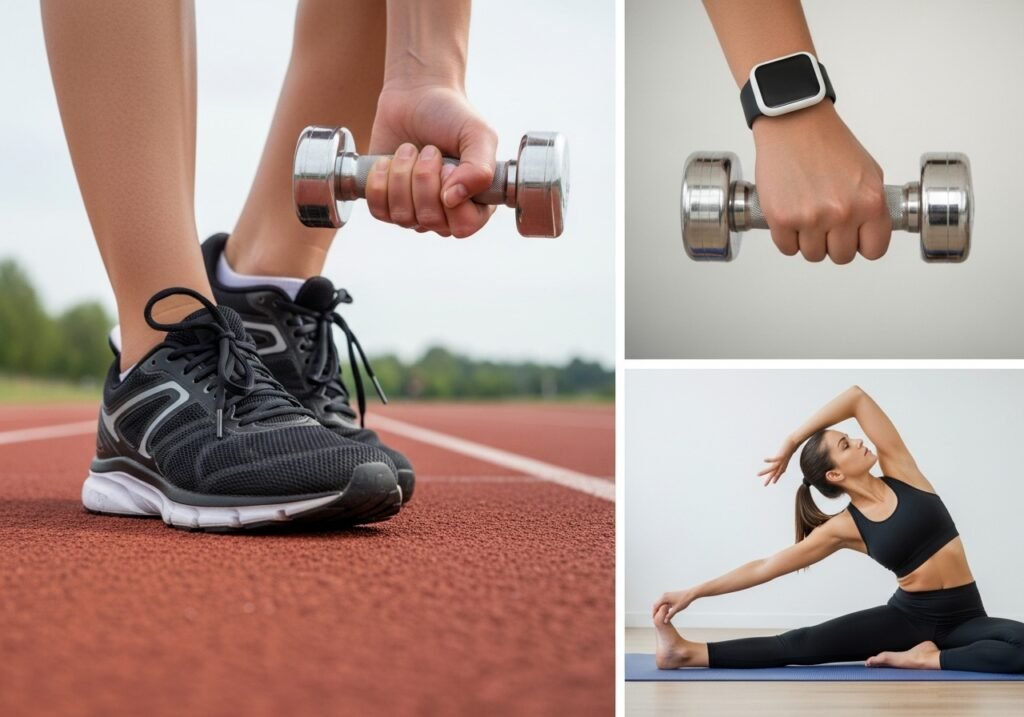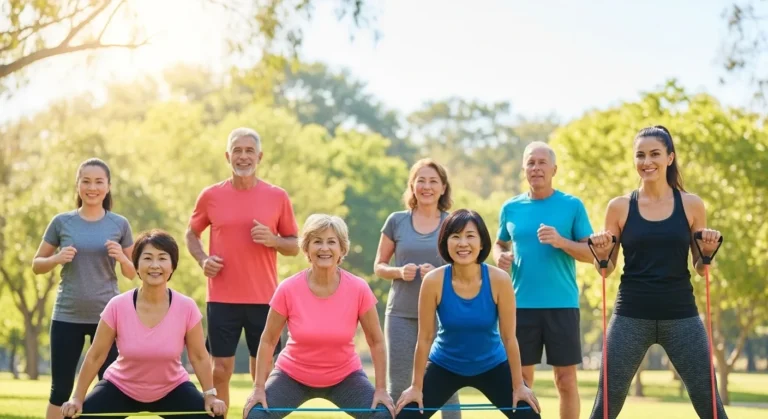Unlock Your Potential: The Ultimate Guide to Physical Fitness & Holistic Well-being
Physical fitness is far more than just looking good; it’s a cornerstone of a healthy, vibrant life. It encompasses your body’s ability to perform daily activities with vigor, reduce the risk of health problems, and bounce back from physical challenges. In today’s fast-paced world, prioritizing our physical health is crucial for maintaining mental clarity, boosting energy levels, and improving overall quality of life. This comprehensive guide will demystify physical fitness, breaking down its core components and providing actionable steps to help you embark on a personalized journey toward peak health. Whether you’re a beginner or looking to refine your existing routine, understanding the fundamentals is the first step to unlocking a healthier, happier you.
Understanding the Core Components of Physical Fitness
Physical fitness is a holistic concept, comprised of several distinct yet interconnected elements. Achieving a well-rounded fitness level means addressing each of these components in your exercise regimen. The primary areas include cardiovascular endurance, muscular strength and endurance, flexibility, and body composition.
Cardiovascular endurance, often referred to as aerobic fitness, is your heart and lungs’ ability to supply oxygen to working muscles during sustained physical activity. Activities like running, swimming, cycling, and brisk walking are excellent for improving your heart health, stamina, and overall energy levels. Muscular strength is the amount of force your muscles can exert, while muscular endurance is their ability to perform repeated contractions without fatigue. Incorporating weightlifting, bodyweight exercises, or resistance training helps build strong muscles, improves bone density, and boosts metabolism. Flexibility, the range of motion in your joints, is crucial for injury prevention, improving posture, and reducing muscle soreness. Stretching, yoga, and Pilates are effective ways to enhance your flexibility. Finally, body composition refers to the proportion of fat and fat-free mass (muscle, bone, water) in your body. A healthy body composition is achieved through a combination of regular exercise and a balanced diet, contributing significantly to long-term health and disease prevention.

Designing Your Personalized Fitness Journey for Lasting Health
Embarking on a fitness journey can feel daunting, but with a structured approach, it becomes an achievable and rewarding experience. The key is to design a plan that aligns with your individual goals, current fitness level, and lifestyle. Start by setting SMART goals: Specific, Measurable, Achievable, Relevant, and Time-bound. Instead of
Designing Your Personalized Fitness Journey for Lasting Health
Embarking on a fitness journey can feel daunting, but with a structured approach, it becomes an achievable and rewarding experience. The key is to design a plan that aligns with your individual goals, current fitness level, and lifestyle. Start by setting SMART goals: Specific, Measurable, Achievable, Relevant, and Time-bound. Instead of “I want to get fit,” aim for “I will walk for 30 minutes, three times a week, for the next month.” This provides a clear roadmap and helps track your progress.
Consistency is more important than intensity when you’re starting. Begin with activities you enjoy, whether it’s dancing, hiking, or playing a sport. Gradually increase the duration, frequency, or intensity as your fitness improves. Remember to include a warm-up before each workout to prepare your muscles and a cool-down afterward to aid recovery and flexibility. Listening to your body is paramount; rest days are essential for muscle repair and preventing burnout. Hydration and nutrition also play a critical role, fueling your body for performance and recovery. If you have any underlying health conditions or are unsure where to start, consulting with a healthcare professional or a certified personal trainer can provide personalized guidance and ensure your fitness plan is safe and effective.
Frequently Asked Questions
What is the minimum recommended exercise for adults? Adults should aim for at least 150 minutes of moderate-intensity aerobic activity or 75 minutes of vigorous-intensity activity per week, plus muscle-strengthening activities on 2 or more days. Do I need a gym membership to get fit? No, you don’t. Many effective exercises can be done at home with minimal or no equipment, such as bodyweight exercises, running, walking, or cycling outdoors. How long does it take to see results from exercise? Results vary depending on consistency, intensity, and individual factors, but many people start noticing improvements in energy, mood, and strength within a few weeks of consistent effort. Is stretching before a workout good for me? Dynamic stretches (movements that mimic your workout) are good before exercise. Static stretches (holding a stretch) are generally better performed after your workout when muscles are warm.
Conclusion
Embracing physical fitness is a powerful commitment to your overall well-being. It’s not about achieving a perfect physique, but about nurturing a body that serves you well, enabling you to live life to the fullest. By understanding the core components of fitness – cardiovascular health, strength, flexibility, and body composition – and integrating them into a personalized, sustainable routine, you build a foundation for lasting health. Remember, every step counts, and consistency triumphs over fleeting intensity. Begin today with small, manageable changes, listen to your body, and celebrate every milestone on your journey. Your efforts in pursuing physical fitness will undoubtedly yield dividends, enhancing your energy, mood, and resilience for years to come.

